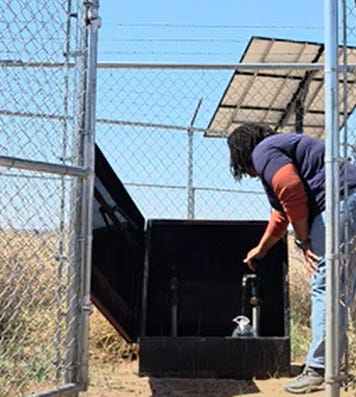Start with Shelter: How I’m Building Uba From Scratch
Off-grid living starts with the basics—and the courage to begin.
Shelter. Water. Food. Security.
When people hear I'm moving off-grid, one of the first questions they ask me is:
"Where do you even start?"
The truth?
You start at the beginning.
And you start with what keeps you alive.
For me, that meant shelter first.
Oh—and if you know me, you know I love a good checklist.
Shelter: Rethinking the Obvious
I've been blessed for a long time with shelter that had every comfort I needed, and a few extras I didn’t.
If something broke, a quick call brought a skilled tradesperson to my door. New roof? Check. Insulated walls? Check.
Shelter, in the city, was invisible.
I didn’t think about it much. Most of us don't.
But moving off-grid?
Shelter had to be an active choice. A foundational decision.
I considered a few options:
A small cabin shell I could build out over time
A full house built from scratch
An RV as a flexible starting point
So, I did what I do best: pulled out a T-chart.
Factored in budget, comfort, timeline—and the RV rose to the top.
An RV gives me all the basic amenities I need, a smooth move-in process, and a runway of a few years while I plan something more permanent (yes, I’m deep-diving into everything from earthships to walipinis).
Water: The Lifeblood
If shelter is safety, water is life.
I needed water for drinking, bathing, cooking, caring for Koy (my dog) and chickens, gardening, and building.
Being 30 minutes from the nearest town means no clean water access = no go.
Thankfully, one of the biggest selling points of the land I purchased was access to a community well right inside the ranch. That gives me immediate, reliable water while I set up my permanent infrastructure.
As for long-term plans:
Drilling a personal well? Out of budget for now.
Rainwater and snow catchment? That's the dream. 🌧️
(And yes, I hear you: “But there’s no rain in the desert!” Stay tuned for a future post where I’ll explain why that’s not the whole story.)
In the meantime, my setup looks like this:
Hauling and delivery systems using a trailer and SUV
Two 275-gallon water totes
Careful monitoring of my water use in the city to forecast needs at Uba
This system isn't perfect, but it’s my bridge to something sustainable
.
Food: From Hobby to Self-Sufficiency
I’ve always loved canning, pickling, fermenting, and lately, dehydrating. Growing veggies and fruits has been my happy place.
But never at the scale of true self-sufficiency.
That’s changing now.
Food preservation isn’t just a hobby anymore—it’s a strategy for sovereignty.
Thanks to some deep family lessons (shoutout to my mom Angie B and my dad Dr. Brooks 🧡), I've been steadily stocking up for over a year.
Here's how I'm setting myself up:
Initial reliance on my stocked pantry and freezer
Regular trips to town for fresh essentials (at first)
Gradual transition to growing, processing, and preserving food on site: gardens, greenhouses, orchards, aquaponics, and yes—the indoor/outdoor kitchen of my dreams.
Abundance feels different when you control your outcomes. 🌱
Security: Freedom with Awareness
When people hear "security," their minds often jump to fences and firearms.
But for me, surveillance and environmental awareness come first.
Since I’ll be using Starlink for internet access, I’ll be installing Wi-Fi-enabled cameras to create 360° visibility around my home base.
Eventually?
Full visual coverage across the property
Horizon monitoring for fire risks and general safety
Of course, security doesn’t work without power—especially off-grid.
To start, I’ve set up a solar generator with solar panels, giving me about 2200 kWh of clean energy to power my essentials:
Cooking
Lights
Electric accessories
Pumping water
Running AC and heat
As Uba grows, so will the system.
Scaling up to a minimum of 5000 kWh is a top priority to ensure that no matter the season, I have the power needed to live, work, and protect the land sustainably.
Fencing was a harder decision.
I want wildlife to move freely.
But I also need to protect Koy, gardens, and livestock.
My compromise?
Fencing only around the immediate home site
Open land everywhere else
Harmony with nature, with a healthy dose of practical boundaries.
Final Thoughts: It's Not That Different—But It Is Intentional
In the end, the needs of off-grid living aren’t that different from city life.
Shelter. Water. Food. Security.
It’s just that now I have to think about it, plan for it, and build it myself,instead of a city doing it for me.
And honestly?
There’s a freedom in that responsibility I can’t put into words.
Amanda’s Mindset Shift Tip 💡
One of the biggest lies that keeps people stuck is the idea that you have to “have it all figured out” before you start.
You don’t.
One of the keys to every success I’ve had is simple:
I take the first step before it’s all figured out.
And then I figure out the next step.
And the next one.
And the next one.
Build your dreams by moving toward them—messy, imperfect, alive.






